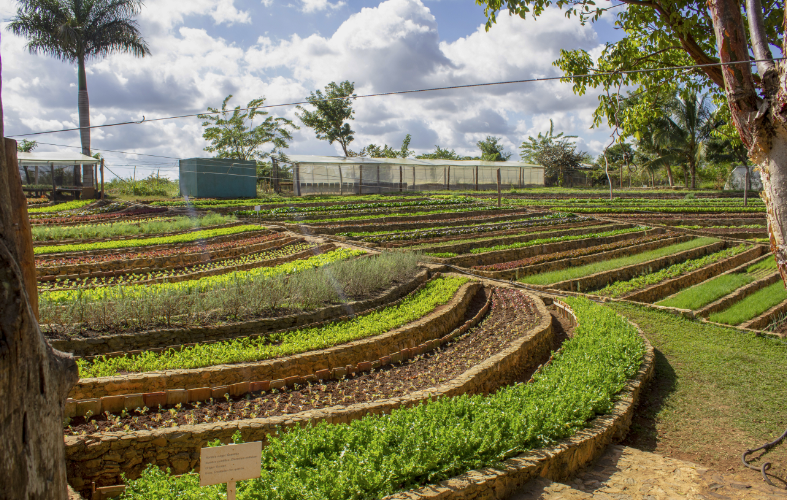3 things Cuba can teach us about boosting climate resilience in agriculture
Fernando Funes gestured at the breathtaking scene of contour terraces brimming with greens.
“Everything here is about working with nature,” he explained to me and a group of visitors at his family farm just outside of Havana, where we admired the diverse assortment of crops, chickens strutting through a grove of trees, and colorful rows of beehives.
The opportunity to visit Fernando’s farm and learn about agricultural conservation practices in Cuba was part of a larger three-day symposium on sustainable agriculture and food systems organized by Environmental Defense Fund, the Foundation of Antonio Núñez Jiménez and the Vermont-Caribbean Institute.
The symposium allowed experts and stakeholders from Cuba and the Americas to learn from each other and make some surprising connections between the considerably different Cuban and U.S. farming systems.
Here are three takeaways that can help inform thinking on how to produce food in a changing climate.

1. Conservation practices build on-farm resilience
As part of its National Plan to Confront Climate Change, commonly referred to as “Tarea Vida,” Cuba is preparing its agricultural sector for a future with unpredictable weather, severe storms and rising seas. The plan includes government programs aimed at building resilient farms through the adoption of conservation practices that increase water use efficiency, improve drought resilience and deliver some other unexpected benefits for the farm.
For example, with more integrated systems of crops, livestock and forestry, Cuban farms are able to produce food while relying on minimal external inputs such as fuel and fertilizer.
In addition, on-farm production of solar power and biogas from livestock manure has resulted in more reliable energy sources, buffering some farmers against energy crises like the long-term outages suffered by Puerto Rico residents following Hurricane Maria.
Finally, both Cuban and Puerto Rican farmers have developed seed banks and locally-adapted crop varieties — a crucial step for adapting to local climate impacts.
2. Sustainable farming contributes to landscape-scale resilience
In addition to clear on-farm benefits, agricultural conservation practices deliver important benefits for the broader landscape.
For example, agriculture in Cuba, as in many parts of the U.S., constitutes a sizable share of the overall landscape. While at first glance Iowa’s expansive fields of corn and soy bear little resemblance to Cuban farms that produce a variety of crops like yuca and mango, both are realizing the importance of watershed-wide planning.
Another broader landscape benefit is to wildlife. For example, Cuba’s forestry sector is increasing its focus on planting native trees to benefit local wildlife. Thoughtfully managed, farms and forests can connect, rather than fragment, natural areas that are critical for supporting climate-resilient biodiversity. Three takeaways from Cuba that can help inform thinking on how to produce food sustainably in a changing climate Share on X
3. Boosting ag resilience will require innovative policy and finance solutions
Experiences from Cuba, the U.S. and other countries reveal how policy and finance can support sustainable agriculture.
For example, Cuba is researching payment for ecosystem services approaches that could allow farmers engaging in sustainable agriculture to receive compensation for the landscape-scale benefits they provide. Assigning economic value to outcomes such as increased soil carbon or improved wildlife habitat would incentivize both conservation practices and data collection more generally, which is essential for science-based policymaking.
Climate change is also a global challenge that will likely call for international solutions. Cuba recently started the process of joining REDD+, a United Nations program that rewards carbon offsets from reduced deforestation and forest degradation. Our Cuban partners are excited at the possibility of using these funds for improved forest management and integrated agroforestry systems with native trees.
Resilient farms produce many benefits: they feed healthy communities, conserve wildlife and can also help mitigate climate change.
Whether you’re in Cuba or the U.S., farms are a central feature of the landscape, economy and society, and we must work quickly and collaboratively to make them more resilient to climate change.










